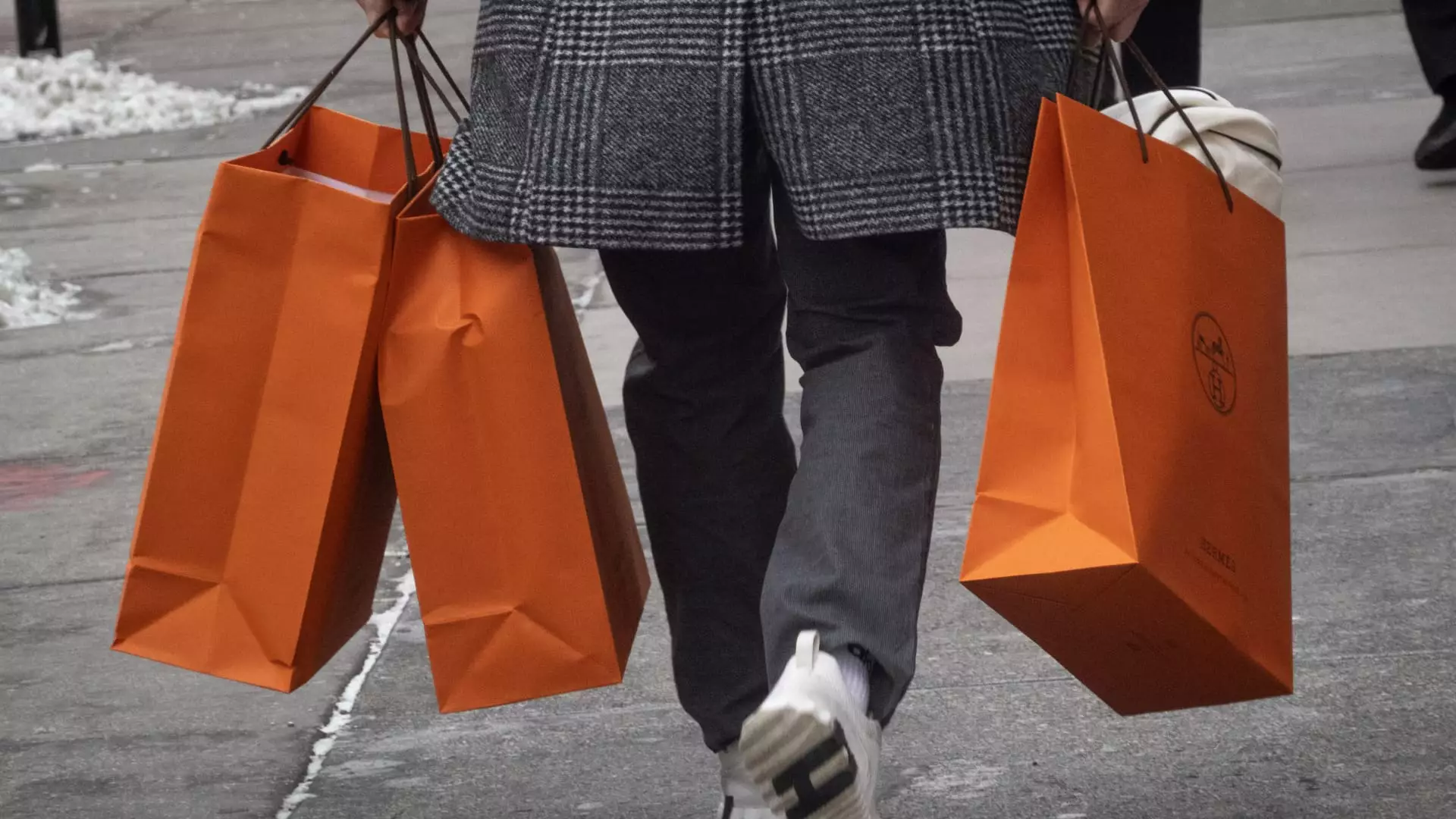Luxury brands in Europe have historically been cushioned from economic upheavals by their status as symbols of opulence and sophistication. However, the introduction of taxpayer-funded tariffs under the guise of protectionism is casting a long shadow over this glittering sector. While LVMH, Kering, and Richemont have largely weathered initial import levies from the U.S., the undercurrents of an impending recession threaten to unravel their hard-fought recovery. Analysts increasingly warn that the days of unabashed luxury consumption could be numbered, and the signs are alarming.
President Trump’s recent tariffs targeted imports from the European Union, raising immediate flags about the future of luxury goods that are partly defined by their “made-in-Europe” ethos. While a temporary pause and reduced tariff rates provide a brief reprieve, the strategic maneuvering of brands may not be enough to shield them from broader economic malaise. As high-end fashion houses stand resolute against Trump’s demands to shift manufacturing to U.S. soil, they face the dilemma of passing the additional costs onto consumers, a move that could backfire in an increasingly uncertain global economy.
The Realities of Price Sensitivity
For decades, luxury buyers have been somewhat insulated from economic fluctuations. However, research suggests that even wealthy consumers may falter when confronted with rising prices linked to tariffs. With estimates showing that luxury brands generate a modest 15% to 30% of their revenue from the U.S., the financial implications of lost sales could spell trouble for companies historically known for their resilience in turbulent economic times. Analysts are cautioning that what appears as a negligible first-round impact could morph into a cascading effect that significantly affects consumer behavior.
Resilience is key for luxury brands, but it can only stretch so far. The perception of value is a delicate balance, and as luxury items become less accessible, the allure that these brands once held may fade. Consumers lucky enough to indulge in luxury purchases may reconsider their choices when confronted with significantly higher prices. This economic contagion looms particularly large with warnings from organizations like JPMorgan indicating a 60% likelihood of a recession, largely fueled by economic insecurity emanating from trade wars.
The Struggle for Growth Amidst Uncertainty
While many luxury companies had begun to experience a renaissance in sales following a tumultuous post-COVID period, Deutsche Bank’s analysis throws a wet blanket on this optimism. The bank’s downward revision of growth expectations brings forth a chilling prospect: the recent uptick in luxury demand may not be a sign of sustained recovery but rather a fleeting anomaly. The broader implications are disturbing; sluggish consumer spending and volatile stock markets not only influence current sales, but they may create long-lasting pessimism surrounding luxury consumption.
Citi’s projections also underline the fragility of luxury brands. The combination of increased tariffs and a market downturn provides a “significant threat” to U.S. luxury demand, a vital growth avenue for many European entities. As these brands navigate unchartered waters, they must question whether they can continue to maintain their luxury status while managing operational costs and consumer sentiment.
A Narrowing Survival Path for Brands
As market dynamics shift, analysts also differ on which brands might emerge relatively unscathed. Hermes and Burberry appear well-positioned to withstand the onslaught, reflecting their strong heritage and loyal customer base. In contrast, brands like Richemont and Moncler might find themselves in precarious positions, struggling to adapt to rapid changes in consumer behavior amid economic upheaval.
In a time when brands must rely more than ever on their storytelling abilities to justify high price tags, the subtle art of brand value will be tested. As the market becomes crowded with fast-fashion alternatives and uniquely-priced luxury options, it’s crucial for these renowned brands to articulate their worth convincingly in a setting increasingly hostile to price hikes.
The Looming Dilemma of Brand Identity
The luxury market thrives on the aspiration of owning an exclusive piece that symbolizes status and taste. Yet, as tariffs disrupt this narrative, brand identity and consumer loyalty might be projected at greater risk. The predicament illustrates an unsettling reality: luxury brands, once seen as untouchable in economic times, are now confronted with consumer pushback, threatening their very essence.
Despite their elite status, luxury brands may find themselves forced into paradoxical scenarios where maintaining exclusivity might conflict with the need to reach broader markets amid price hikes. In this delicate dance, the very allure of luxury could transform into a liability if high-end fashion houses do not navigate these turbulent waters astutely. Will they adapt, innovate, and emerge as stronger players in a recovering market, or will they falter under pressures unseen? The stakes have never been higher, and the challenges ahead for European luxury brands are stark and complex.

